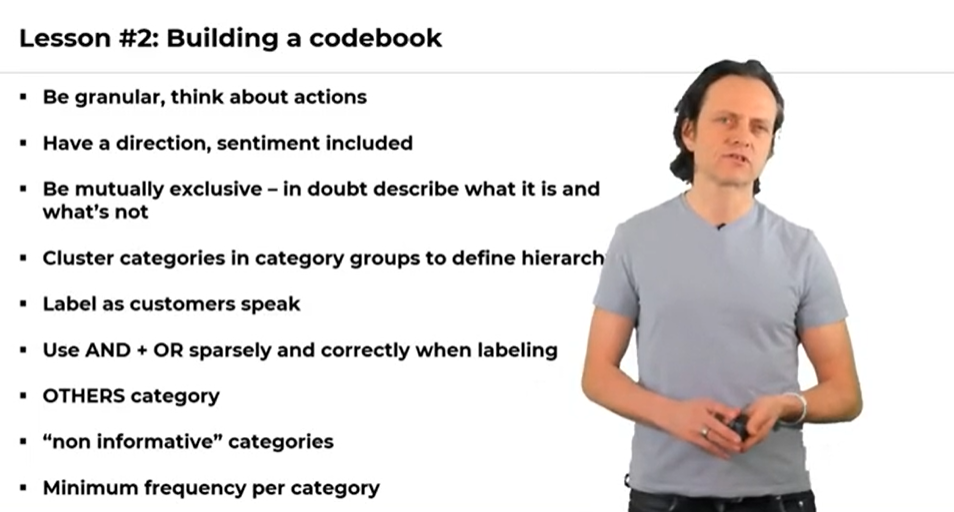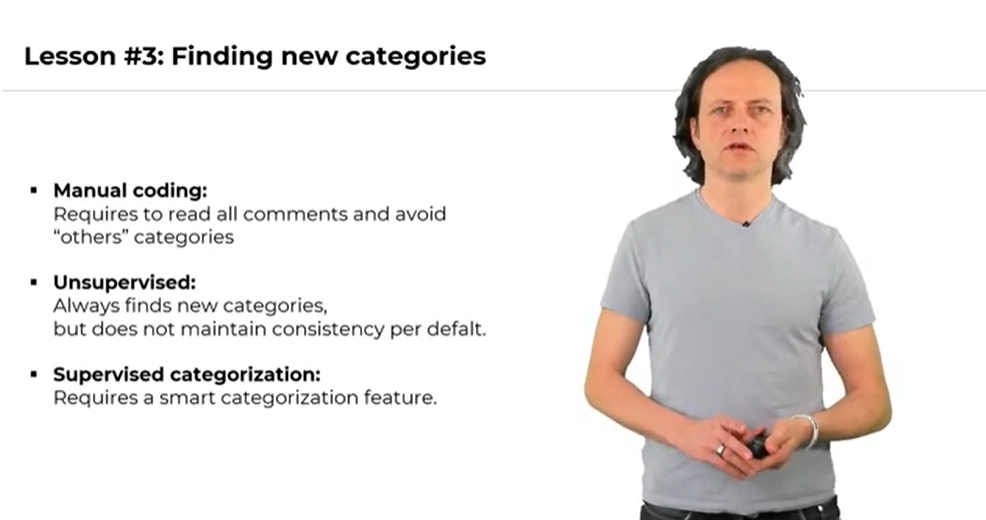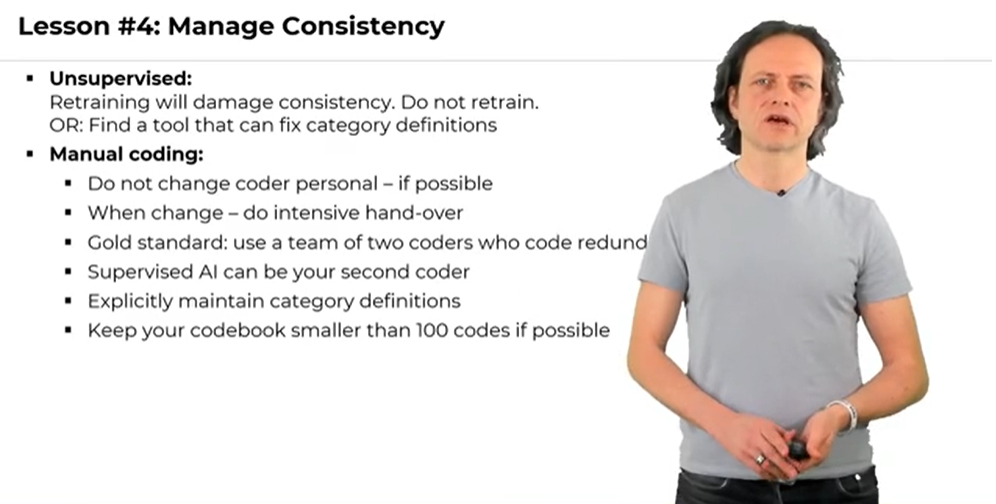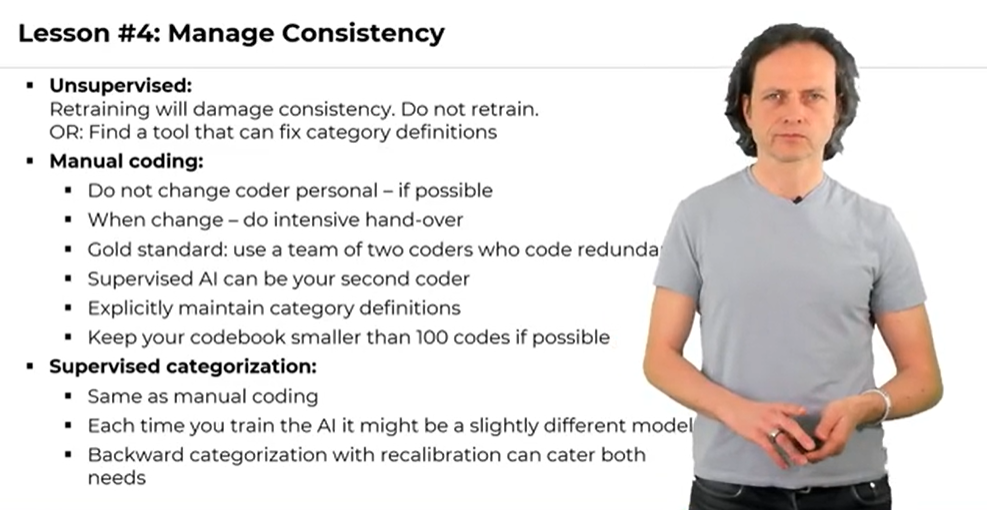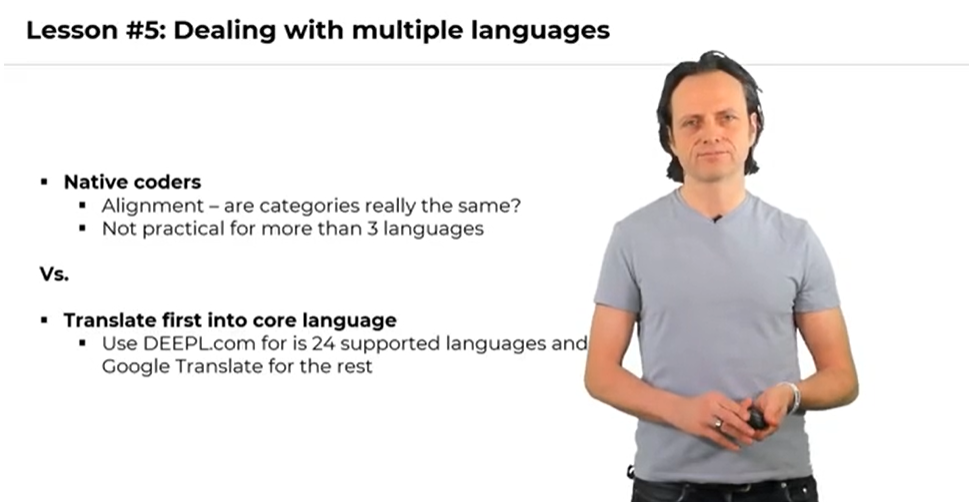Be granular and think about actions – There are various types of coding. Manual coding and supervised coding require the human to build a codebook, and there are some do’s and don’ts around that. Of course, it depends on the use case, but in general, the recommendation needs to be granular and you have to think about the actions.Therefore, it’s not enough to have a code that is correct. It should also be useful and it becomes useful if you are more specific. It’s okay to categorize something as “poor quality”, but it would be good to know how to improve this quality. So, granularity is the king and growing a narrative translates into actionability.
Always have codes with the direction – It means that the code itself has the sentiment. Why? It’s because you can have codes like price and quality. But when people actually read it, they don’t know how to understand that. When you build categories, always construct them in a way that they have a direction like bad pricing, good pricing, bad quality, and good quality. This way, everyone who reads it, understands what it means when you say quality and price. So, it becomes an exercise, and later it enables you to detect granularities by having direction-based codes.
Be mutually exclusive – It means make sure when you choose a certain category, the other one can’t be the same. For instance, friendly service is not mutually exclusive with great service. You have to understand that one specific verbatim belongs to only one category. There is no doubt whether or not it belongs to. If you are not clear, write a description consisting of one or two sentences as it helps the coder to remember the real meaning. But if you can’t describe it, that’s probably not a good piece of code.
Cluster categories in category groups – You have to cluster categories in category groups to define a hierarchy as it enables you to have overview summaries. You can group the categories by classifying them into different clusters like the parent category and the child category. The important thing is to train the child of the specific category.
Label as customers speak – You have to be specific when you label a certain category. Typically, we tend to use general terms that are hard to understand. So, you have to be descriptive and use the language of the customer for the below reason:
- First, you will better understand what it means and AI will understand it better too because the latest AI is not just the grouping of categories, it really looks at what’s the label of the group. What does it mean? Is it associated with the content of the verbatims? So, that’s why the label itself is important for supervised learning.
Use AND + OR when labeling – Sometimes, you have certain categories, and they can not be differentiated from one another. For example, brand, great brand, reputed brand are hard to differentiate from a customer’s point of view. It is important to use AND and OR the right way when you have certain categories. AND means the customer mentioned both categories, and OR means the customer mentioned one of them. It is necessary to give these details to the person who reads the label as well as the AI the correct guidance.
OTHERS category – What’s very much used are OTHERS category. The only use of it is to count how much we did not categorize specifically. But, it should only be used for manual coding because there are two reasons for that:
- You risk to confuse the AI as it’s such a broad thing, and is trained to find something as a link between something to something specific.
- When you do that, it may work somehow, But you will not be able to leverage the feature whether category or AI suggests to you the topics. It’s super important to understand that AI knows what it doesn’t know. It can only be managed if you do not use another category.
Non-informative categories – The non-informative categories are those that don’t belong to our codebook. Typically, customers may say:
“I gave it zero because I don’t recommend it in general.”
You need to pay attention to what the customer says because it helps you explain the outcomes.
Minimum frequency per category – There is a question:
What’s the minimum frequency of a category?
It depends on the usage and it’s something you need to decide. You always build categories and open a new category if it’s mutually distinctive to something that is already mentioned in the other categories. At the end of the exercise, you can still decide to skip some of the categories.










